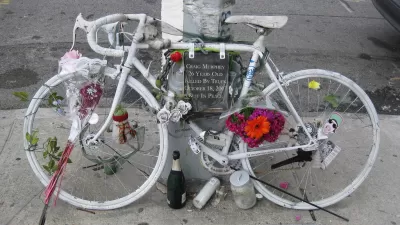2015 was the first year that driving under the influence of drugs (DUID) surpassed those killed while driving under the influence of alcohol. Increased legal access to marijuana is correlated with the surge. Amphetamine use is also a factor.

Governors Highway Safety Association (GHSA) and the Foundation for Advancing Alcohol Responsibility, was released April 26. It analyzed fatal crashes in 2015 using the National Highway Traffic Safety Administration's (NHTSA) Fatality Analysis Reporting System (FARS).
It found that drugs, be they legal or illegal, were present in 43 percent of fatally injured drivers, up from 28 percent in 2005, compared with 37 percent who tested above the legal limit for alcohol.
"Of the drivers who tested positive for drugs, more than a third had used marijuana and more than 9 percent had taken amphetamines," reports for The Washington Post. In 2005, 28 percent of fatal crash victims tested positive for drugs.
“As drunken driving has declined, drugged driving has increased dramatically, and many of today’s impaired drivers are combining two or more substances,” said Ralph S. Blackman, president of the foundation, a nonprofit founded and funded by a group of distillers.
This is the second report by GHSA and the foundation. The first, released in September 2015 is based on 2013 FARS, showed that drugs accounted for 40 percent of driver fatalities, about the same as alcohol-related deaths.
Medical and recreational use of marijuana has been growing in the United States. According to the April 2007 infographic map of the U.S., nine states plus the District of Columbia now allow recreational use of the drug.
Major challenges for reducing drug-impaired driving include drivers being unaware that drug use affects driving, and testing the drivers for drug use is more complex than establishing a blood alcohol standard of 0.08.
Surveys of regular marijuana users in Colorado and Washington state which [have] legalized recreational use found that almost none of them thought marijuana use impaired their driving, while they believed drinking alcohol did.
The report lists a total of seven bullets explaining why drug-impaired driving is more complex than alcohol-impaired driving for many reasons.
Credit: Governors Highway Safety Association (GHSA)
"Although the liberalization of marijuana laws and increase in drug-use fatalities might lead to an easy conclusion, the report cites European studies that found marijuana use slightly increased the risk of a crash, while opioids, amphetamines and mixing alcohol with drugs greatly increased the risk of a crash," adds Halsey.
Still, it's hard to ignore the finding in Colorado that marijuana-related traffic deaths increased by 48 percent since the enactment of Colorado Amendment 64 in November 2012.
Halsey recognizes the opioid epidemic: "heroin use and the abuse of prescription drugs — is well established. In 2015, more than 33,000 people fatally overdosed on opioids, almost equal to the 35,095 people killed that year in all traffic crashes," he reports. However, there were few references to them in the 56-page report [pdf], unlike marijuana which was widely covered.
FULL STORY: Drugged driving eclipses drunken driving in tests of motorists killed in crashes

Planetizen Federal Action Tracker
A weekly monitor of how Trump’s orders and actions are impacting planners and planning in America.

Congressman Proposes Bill to Rename DC Metro “Trump Train”
The Make Autorail Great Again Act would withhold federal funding to the system until the Washington Metropolitan Area Transit Authority (WMATA), rebrands as the Washington Metropolitan Authority for Greater Access (WMAGA).

The Simple Legislative Tool Transforming Vacant Downtowns
In California, Michigan and Georgia, an easy win is bringing dollars — and delight — back to city centers.

The States Losing Rural Delivery Rooms at an Alarming Pace
In some states, as few as 9% of rural hospitals still deliver babies. As a result, rising pre-term births, no adequate pre-term care and "harrowing" close calls are a growing reality.

The Small South Asian Republic Going all in on EVs
Thanks to one simple policy change less than five years ago, 65% of new cars in this Himalayan country are now electric.

DC Backpedals on Bike Lane Protection, Swaps Barriers for Paint
Citing aesthetic concerns, the city is removing the concrete barriers and flexposts that once separated Arizona Avenue cyclists from motor vehicles.
Urban Design for Planners 1: Software Tools
This six-course series explores essential urban design concepts using open source software and equips planners with the tools they need to participate fully in the urban design process.
Planning for Universal Design
Learn the tools for implementing Universal Design in planning regulations.
Smith Gee Studio
City of Charlotte
City of Camden Redevelopment Agency
City of Astoria
Transportation Research & Education Center (TREC) at Portland State University
US High Speed Rail Association
City of Camden Redevelopment Agency
Municipality of Princeton (NJ)




























